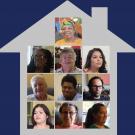
Land Use, Transportation, and Housing
While it is common talk about the local and the global, most of us actually live our lives regionally. Every day, we interact with and participate in systems that defy conventional political, socioeconomic, and cultural boundaries. We commute across city or county lines, receive water and power from distant generation sites, enjoy art and performances that reflect area landscapes and cultures, and move from place to place seeking work, education, and opportunity. Center for Regional Change (CRC) research explores these regional dynamics in an informed, participatory, and socially responsible way. Our goal is to help changemakers make sense of the complex social, cultural, political, and economic forces that shape regions, and invest in a healthy, prosperous, sustainable, and equitable future.
The CRC has developed a range of analytical tools that have helped guide local, regional, and state-level land-use, transportation and housing planning to place social and environmental equity at the heart of their efforts. The CRC’s work on Senate Bill 375, (the state’s policy to promote climate smart cities and regions), helped governments and advocates develop Sustainable Community Plans that prioritize the health and well-being of low-income people and people of color, including in the Six Big Wins campaign in the San Francisco Bay Area and similar efforts throughout the San Joaquin Valley. The CRC creates innovative mapping methods to help guide efforts to support the advocacy for and development of affordable housing across the state, including an inclusionary housing database and web-based mapping tool that features and amenities promotion social determinants of health. The CRC also studies regional change and it’s implications, including the migration from the Bay Area to the Central Valley and Sierra Foothills. It has innovated on transportation by leveraging community engagement through programs like the Transportation Equity and Environment Justice Advisory Group and tools such as the Integrated Transportation Health Impacts Model to illustrate the benefits of shifting from auto-dominated travel to active transportation.









